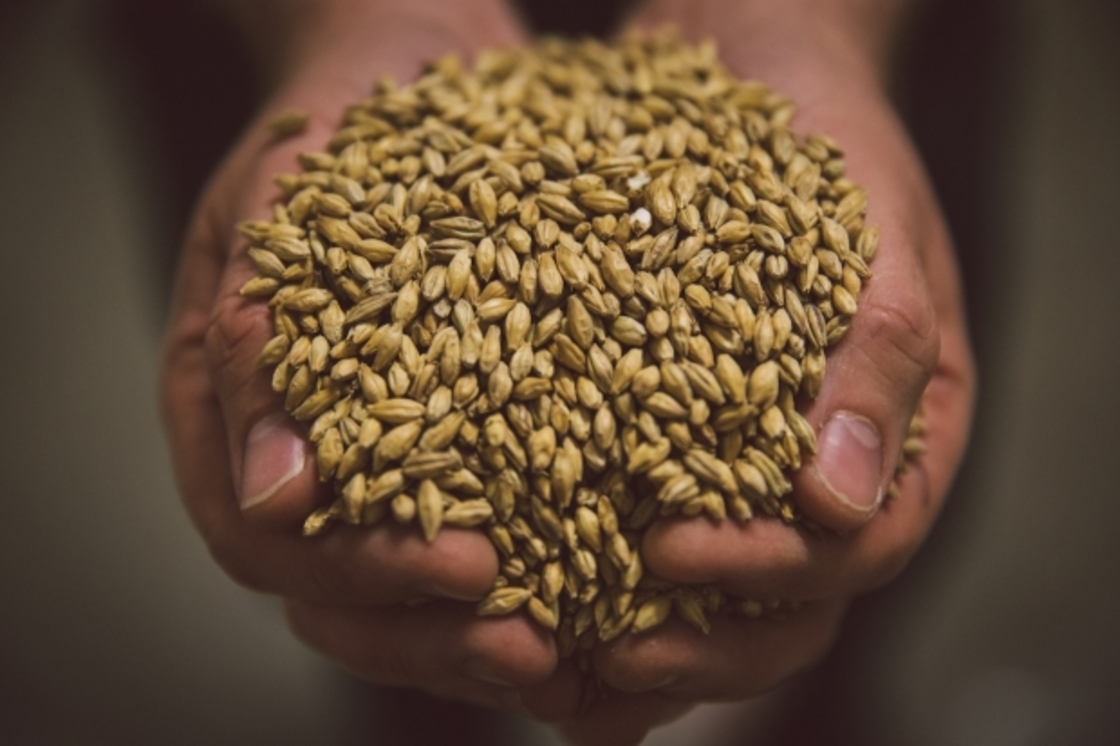MALT VAULT; PALE & PILSEN MALTS

Welcome to the first instalment of a series of blogs that throw the swinging lightbulb over one of our favourite ingredients in beer and really get down and dirty with what it does, how it does it and why we think that's so freakin' awesome. We'll be looking at malts in our Malt Vault posts, and we'll also be running "Hop Stop" blogs alongside, looking at some lovely hoppy goodness, just so they don't feel left out (and because we are really really obsessed with hops), and finally Yeast Feast blogs looking at the different yeast strains brewers use and how they change beer.

Hopefully these posts will help homebrewers get an insight into how we brew our beers and the ingredients we use, as well as just offering a sneak peek into the brewery!
The talk of the tun:
Before we get into the nitty gritty, we'll just explain a brief summary of what malt does and why for any beery newcomers. Malt is used in the very first stage of the brewing process called 'the mash'. It's at this stage that malt is heated with water (lovely Scottish water if you're us!) to activate the enzymes in the grist and extract sugars, which will come in handy down the line when you add yeast, which turns those sugars into alcohol. Without those sugars, you wouldn't get booze. So they're integral. Their colour also heavily influences the shade of your resultant beer, and they impart differing levels of flavour and aroma depending on how they're used.

Pale & Pilsner Malt
This is a huge pair of categories, but generally speaking, these make up the bulk of the base malts used for lighter beers. Pale ales, IPAs, pilsners, you name it. If it's light in colour (think straw through to gold-ish) it's probably thanks to our pals the pale malts. Jackhammer, Dead Pony Pale Ale and Punk IPA rock these as their stars in the mash tun, with Dead Pony in particular employing some bolder malty buddies to add some extra punch and colour. We'll come to those in a later post!
In addition to straight up pale malt, you'll also find pilsner malt being the biggest contributor to any Czech and German- style lagers. Check out our This. Is. Lager for a prime example of such a brew.

Here's the lowdown on pale malt from our brew team!
Franz:
Depending on the malting regime, pale malts can impart a lot of honey flavours vs Pilsner Malt, which is a little less modified than Pale Ale. It gives you less sweetness and is crisper. Jackhammer is brewed with 100% pale malts, so it's the ideal beer to check out their effect on body and palate. For a brew of 100hL we'll use around 2,400kg of pale malt.
Pale malts account for around 80% of all malts we use (they're pretty important!). It doesn't take a lot of speciality malts added into the bill to have the desired effect. It's the base for almost every beer we brew, but on its own it'd get boring very quickly.

Angelos:
Our 2-row pale malt creates a white canvas we can draw the recipes upon. It's relatively 'aggressive' as it has an impressively high extract efficiency, but it requires precise handling and brewing skill or it will cause a lot of protein haze issues. The brewer must tame the malt to his or her needs.
The brew kit at BrewDog has a 98.89% efficiency, whereas my homebrew kit at home is roughly 30 litres, and has an efficiency more like 70-80%, meaning I need to add more malt to achieve the same extract.
Flavour wise, I would describe pale malts as sweet and biscuity with a dry crisp taste making it a perfect canvas to through in some hoppy alcohol blasts.

Grab some pale malts and all your other essential homebrew kit from BottleDog in London, and stay tuned for more of these blogs on the horizon! We'll be featuring more malt families, hop growing regions and yeast strains, so you can really get your geek on!

Join the Discussion
Comments (6)